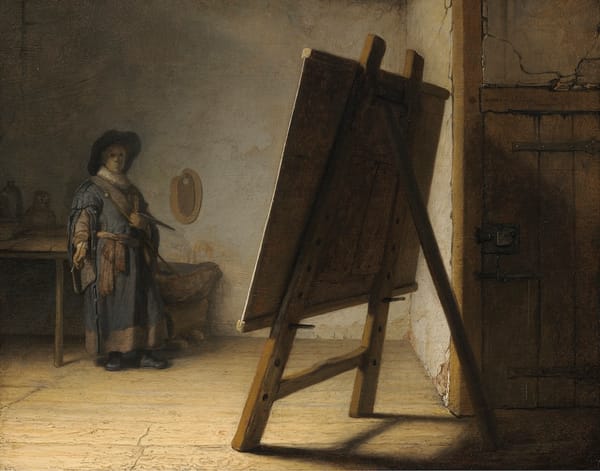Myth of the Overnight Success: Years Behind the Canvas
The myth of the overnight success in art masks years of dedication, rejection, and persistence. This article explores the long road behind the canvas and why real artistic triumphs rarely happen overnight.

Success in the art world often appears, at first glance, to strike like a bolt of lightning. A young artist exhibits in a major gallery, a painting fetches a staggering price at auction, or an Instagram account showcasing experimental sketches suddenly attracts thousands of followers overnight. To the casual observer, it looks like magic — a sudden leap from obscurity to fame. But behind nearly every so-called “overnight success” is a story of years, often decades, of quiet labour, rejection, and relentless persistence.
In art, as in music, theatre, or literature, the notion of instant recognition is a seductive but misleading myth. This article explores why it persists, what lies beneath it, and how understanding the long road to success can offer encouragement to both emerging artists and seasoned practitioners alike.
The Romance of the Overnight Star
The idea of the “overnight success” has long been part of the mythology of creative culture. Popular media is partly responsible for perpetuating this image. Biographical films, journalistic profiles, and social media posts often highlight the breakthrough moment — the first gallery show, the prize-winning painting, or the viral post — without delving into the years of preparation that made it possible.
Cultural narratives also favour meteoric rises. We love stories of prodigious talent discovered in a moment: the child painter who stuns critics with her ability, the self-taught artist whose work suddenly commands attention, or the outsider who bursts through the gates of the art establishment. These tales satisfy our desire for drama, inspiration, and the illusion that greatness requires only innate talent.
Yet the reality is far less glamorous. A solo exhibition at a blue-chip gallery may appear sudden to the public, but for the artist it is usually the culmination of years of experimentation, countless rejections, and the slow building of networks and skills.
Years in Obscurity
Every canvas that hangs in a gallery carries with it invisible layers of history. Behind the single painting is a studio filled with discarded attempts, unfinished experiments, and quiet mornings spent wrestling with form, colour, and meaning. For many artists, there are also years of financial struggle, balancing day jobs, teaching, or freelance work with the demands of creative practice.
Consider the trajectory of artists like Yayoi Kusama, whose immersive installations now draw queues around the block. Long before she became a global icon, Kusama spent decades working largely unrecognised, often in poverty, facing rejection from an art world dominated by male voices. Or think of Van Gogh, who sold only a handful of works in his lifetime and endured years of obscurity, yet is now considered one of the most significant painters in Western art.
These stories highlight a truth often obscured in glossy art magazines: sustained practice and perseverance, rather than sudden genius, form the backbone of artistic careers.
The Role of Practice and Process
Artistic growth is rarely linear. An artist’s early work may bear little resemblance to the pieces that eventually receive acclaim. Years of trial and error, technical refinement, and exploration of themes gradually shape a distinctive voice. In many cases, the so-called “breakthrough” moment arrives when the artist’s practice, reputation, and audience readiness align.
Artists often describe their studio routines in terms similar to those used by athletes or musicians. Daily practice, discipline, and incremental improvement are essential. This steady work may remain unseen by the public but is critical to achieving mastery. In fact, art schools and residencies often emphasise process over product — encouraging emerging artists to view each work as part of a continuum, not an isolated achievement.
The Gatekeepers of Recognition
Another dimension of the “overnight success” myth is the role of galleries, curators, critics, and collectors. Recognition often depends not only on the quality of the work but also on timing, connections, and the support of influential figures.
A curator’s decision to include an artist in a group exhibition, a critic’s favourable review, or a collector’s purchase can create the impression of sudden fame. But such opportunities typically arise after years of networking, portfolio building, and consistent practice. The art market, in particular, is notorious for its volatility. A painting that once went unnoticed may suddenly soar in value, propelled by external forces far beyond the artist’s control.
Social Media and the New Myth
In the digital era, platforms such as Instagram, TikTok, and online galleries have accelerated the myth of the “instant artist.” Viral moments can indeed propel a previously unknown creator into the spotlight within days. A short video of a painting process or a striking digital illustration can attract millions of views, leading to gallery invitations or commercial collaborations.
Yet here too, appearances deceive. Most artists who achieve sudden online fame have spent years honing their craft, developing a distinctive visual identity, and consistently sharing work before their breakthrough post went viral. What looks like chance is usually the result of preparation meeting opportunity.
Moreover, the visibility of social media success often masks the challenges of sustaining it. Viral fame may attract attention, but converting that into a sustainable career requires ongoing effort, resilience, and adaptability.
The Emotional Dimension
Believing in the myth of overnight success can be particularly damaging for emerging artists. When recognition does not come quickly, it is easy to feel inadequate or defeated. Many question their talent, comparing themselves to peers who appear to advance more swiftly.
Understanding the realities of artistic careers — that they are often measured in decades, not months — can provide a healthier perspective. Success in art is rarely about speed; it is about persistence, authenticity, and the ability to endure through both obscurity and acclaim.
As one painter once put it: “You don’t make art to be discovered; you make art to discover yourself. The recognition may or may not come, but the work must continue.”
Redefining Success
The myth of the overnight success also raises the question: what is success in art? For some, it may be financial stability or international recognition. For others, it may be the ability to sustain a practice, contribute to community projects, or explore personal themes.
By broadening our definition of success, we resist the pressures of comparison and cultivate resilience. The artist who teaches children, runs local workshops, or quietly produces work in a home studio is as much a success as the one whose paintings sell for six figures. The art world’s fixation on fame and market value often overshadows these quieter forms of achievement.
Lessons for Emerging Artists
For those beginning their artistic journey, dispelling the myth of overnight success offers both relief and responsibility. Relief, because it reminds us that lack of immediate recognition is not failure. Responsibility, because it underscores the importance of commitment, patience, and authenticity.
Here are some lessons drawn from artists’ experiences across generations:
- Commit to the process. Focus on regular practice, experimentation, and growth rather than immediate results.
- Embrace rejection. Rejections are inevitable and often signal progress. They should be seen as stepping stones rather than setbacks.
- Build communities. Connections with peers, mentors, and local networks are invaluable for both support and opportunities.
- Seek resilience. Sustaining a career in art requires emotional stamina. Balancing creativity with self-care is essential.
- Define success personally. Do not measure your path solely by external recognition or market value.
Conclusion
The myth of the overnight success oversimplifies the complexities of artistic life. While the spotlight may appear suddenly, the foundations are almost always laid over years of invisible effort. Recognising this truth allows us to appreciate artists more fully — not merely for their celebrated works but for the perseverance, risk, and quiet courage that precede them.





